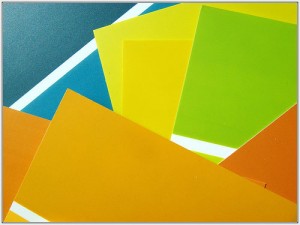 It’s no secret that color is the most important part of your design. It doesn’t matter how smooth the elements of your project are, if the color scheme is horrendous no one will look at it. If this sounds wrong, take a second to think about the cars in Pimp My Ride: Shag carpet isn’t bad on its own, but hot-pink, leopard-printed shag carpeting with lime-green accents most certainly is.
It’s no secret that color is the most important part of your design. It doesn’t matter how smooth the elements of your project are, if the color scheme is horrendous no one will look at it. If this sounds wrong, take a second to think about the cars in Pimp My Ride: Shag carpet isn’t bad on its own, but hot-pink, leopard-printed shag carpeting with lime-green accents most certainly is.
With that in mind, use these coloring tips to improve the readability and eye-candy value of your next design:
How Should I Pick My Design’s Colors?
When picking colors for your next design, you’ll want to be sure you have a consistent color scheme. If you aren’t familiar with your basic color palates (tetradic, triadic, complementary, etc.) do a quick Google search and educate yourself: You’ll be using these expressions for a long time to come, and having them figured now makes you much more attractive as a designer. Once you’ve got the basics, feel free to use a tool like Color Scheme Designer to gather swatches for your next project. You could sit down with a color wheel and figure out these patterns yourself, but the benefit of doing so is marginal when there’s handy digital tools out there just waiting to be found.
What Are Color Connotations, and Why Should I Care?
Within the human psyche, certain colors come with what we call cultural connotations. That is to say, certain colors evoke specific responses in the average viewer. This is why we make associations like “green with envy†or “seeing red.†This is also why large corporations hire vast teams of designers like you to tell them what color their logo should be. For more examples than you can shake a stick at, check out this post by ColourLovers.
What Connotations Should I Be Aware?
Psychologists have spent centuries working out the nuances of color associations, but at the end of the day there’s only a basic few you need to be aware of. For starters, cooler colors (greens to blues) are often seen as being more creative, while reds (including oranges and yellows) are often thought of as being more steadfast, energized, or analytical. No matter how you split though, softer colors like light greens and bright yellows should be avoided, as they’re often thought of as being “weak†or unimpressionable.

